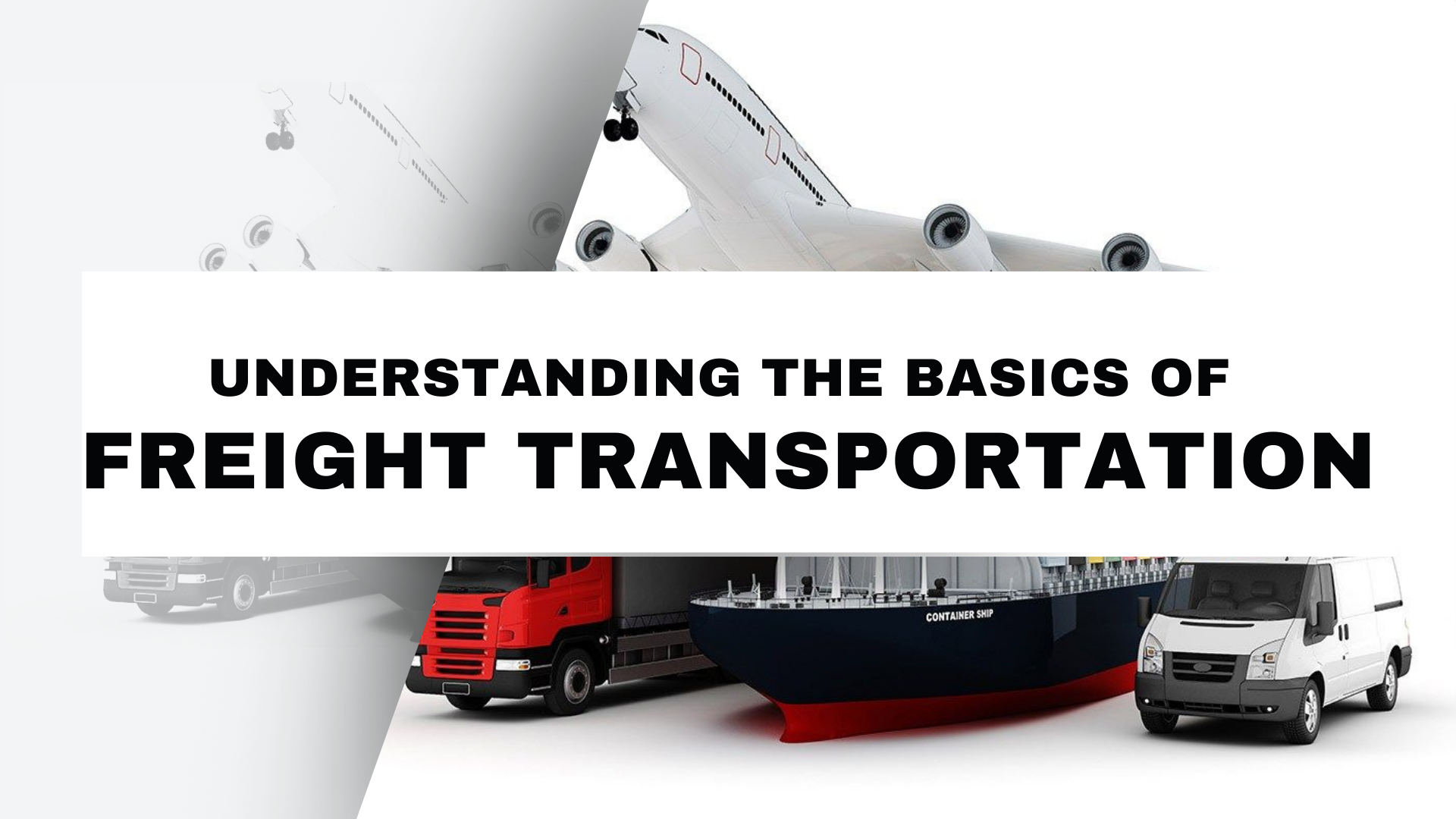Understanding the Basics of Freight Transportation
Freight transportation refers to the process of moving goods from one place to another, usually for business purposes. It includes various modes of transportation, such as air, sea, rail, and trucking.
Freight transport is important for the world economy, as it helps deliver goods throughout the supply chain. This is especially true for international businesses, as it provides a quick and efficient way to move products between countries. In this Blog, we will discuss the basics of freight transportation, including its key elements and challenges.

5 Essential Basics of Freight Transportation
1. Important For Business and Customers
Freight transportation is essential for both businesses and consumers. It enables businesses to transport goods and materials to customers and suppliers, ensuring that operations continue smoothly. For consumers, it enables them to access the products they want, regardless of where they live. The movement of goods is also important for international trade, allowing countries to import and export products.
2. Advantages and Disadvantages of Modes
Various freight transportation modes are available, each with its advantages and disadvantages. Air freight is the fastest mode for transporting high-value and time-sensitive goods. Sea freight is the most economical option for transporting bulky items long distances.
Rail freight is reliable for transporting large volumes of heavy and bulky goods. Trucking is flexible and can reach remote places where other transportation modes cannot go.
3. Factors Affecting Efficiency
Several factors affect the efficiency and reliability of freight transportation. These include the type of goods we transport, the distance we cover, the mode of transportation, and the infrastructure available. Weather conditions, customs regulations, and political stability in different countries can also affect the transportation process.
Additionally, the cost of transportation can be impacted by fuel prices and other economic factors. It is important to take all these things into account when planning freight transportation to ensure that goods arrive safely and on time.
4. Freight Services
Freight transportation companies offer various services to help businesses and consumers move goods from one point to another. Freight forwarding involves managing transportation, packaging, customs, and logistics for goods.
Other services offered by freight companies include warehousing, distribution, and supply chain management. These services can help businesses streamline their operations and speed up the transportation process.
5. Choosing a Freight Transportation Company
Choosing the right freight transportation company is crucial for the success of your business. Consider factors such as experience, reputation, pricing, coverage, and range of services offered when choosing a company. Ensure that the company has the necessary licenses, insurance, and compliance with regulatory requirements.
Freight transportation is a critical aspect of modern trade and commerce. Knowing the fundamentals of shipping can assist businesses and individuals in making informed choices about moving items. We hope this post has been informative and helpful to you as you navigate the freight transportation world.
If you have questions, rely on the knowledge of Power Link Freight Transportation Services. If you need freight shipped across the country, across the border, or the city, Power Link Freight will meet and exceed your every need. Request a quote online or call them at (905) 637-2403 or toll-free at 1-866-504-1561.
Share this industry insight!
You might also like




